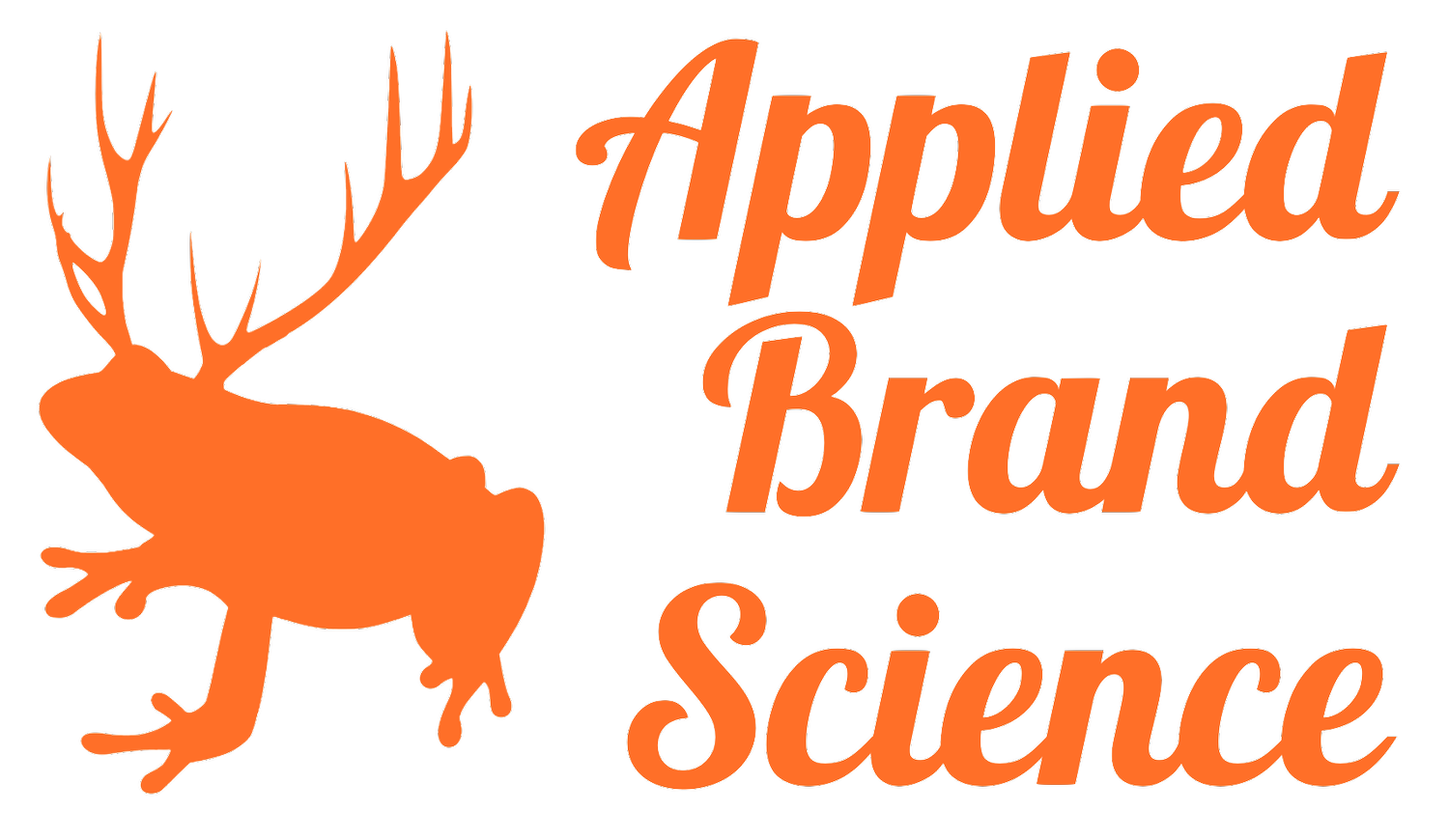
Which election map should we be using?
Why go through this seemingly-basic stuff in such detail?
Because if we chase the wrong data in business, that can be dangerous. And if we do so simply because we didn’t display it well, that’s just crazy.
If bad data takes you confidently in the wrong direction, then bad data visualization lets you jump confidently to the wrong conclusions.

Why do polls fail?
Like, why do political polls seem to be so bad at predicting elections.
There are two parts to the answer.
1: UNACCOUNTED-FOR ERROR
2. OUR EXPECTATIONS OF POLL PREDICTION

Can a strong brand improve performance marketing?
Like, does performance marketing perform better if you have a strong brand?
Tracksuit worked with TikTok to find out.
They studied 3 years of TikTok data from AUS/NZ for 11 brands running ads for at least 10 months each. Aided brand awareness ranged from 10% - 60% for the brands.

How bland can brands get, anyway?
In the past 20 years, bland cars — black, white, gray, silver (aka gentrified gray) — have gone from 60% of all new cars to 80%. Yowza!
White cars are #1, having nearly doubled from 16% to 28%.

How many “positions” are there anyway?
It’s a slippery fish. “Positioning” has as many definitions as “brand”, “love”, and “sport.”
Many positioning exercises lay out the who-what-where-when-why-&-how of your offering. Like positioning Mad Libs: “For [ ], our brand is the only [ ] that [ ] your tummy because we [ ].”
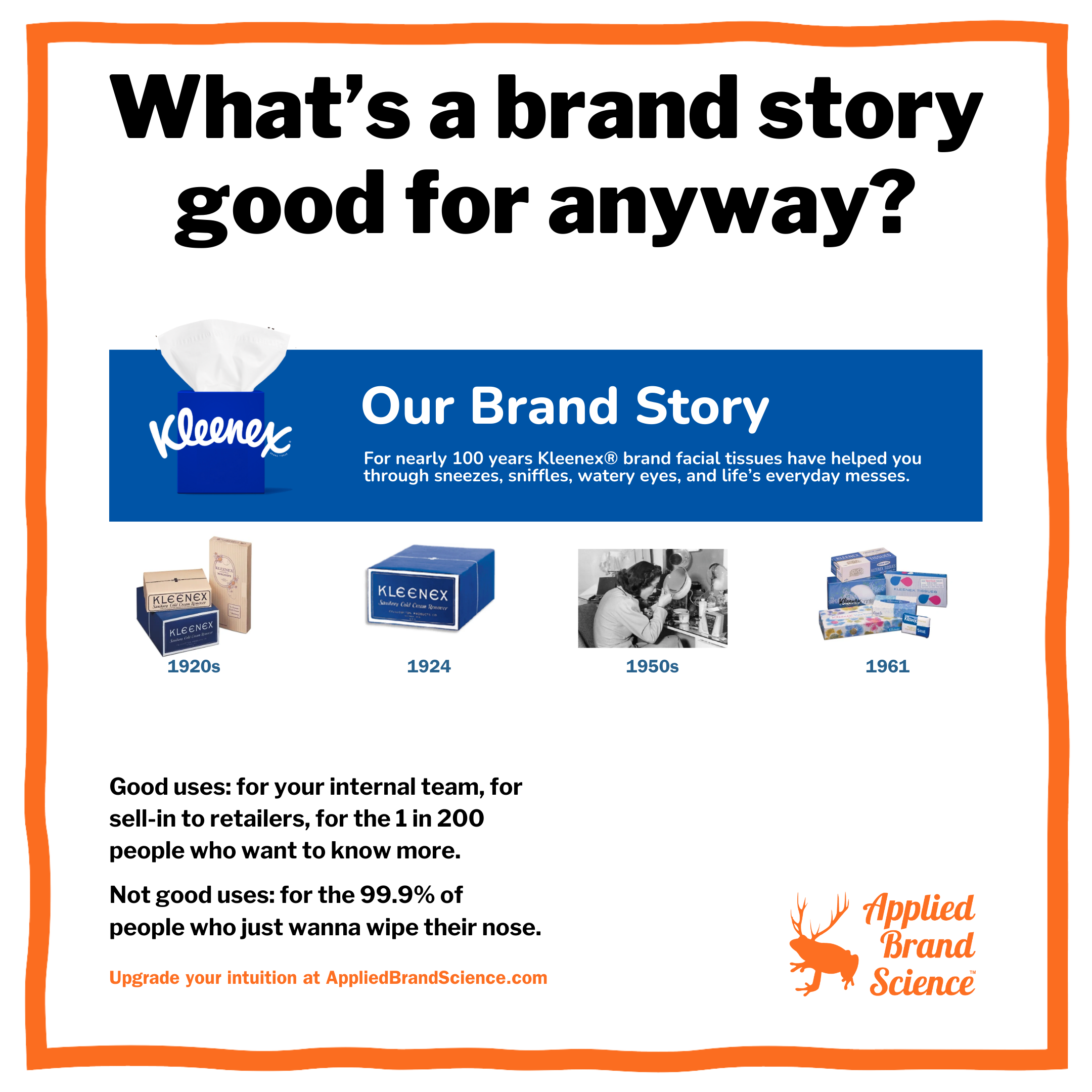
What’s a “brand story” good for?
Like, do you need one? And if you have one, what do you do with it?
I regularly ask people at talks and workshops if they know the brand story of their toilet paper. You know — the stuff you use every. Single. Day. Of. Your. Life.
And maybe 1 in 200 have a clue.
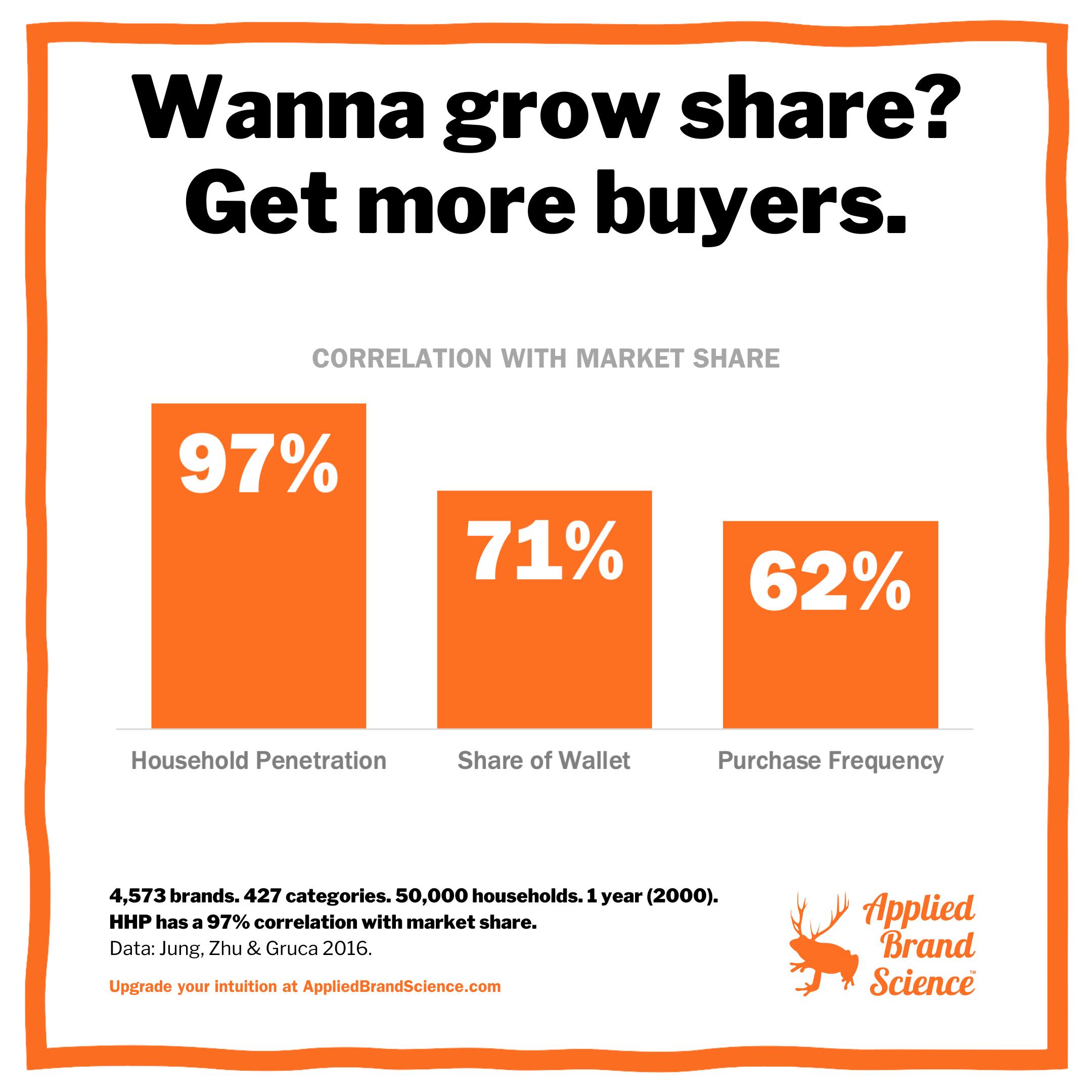
Wanna grow market share?
There are two ways to do it:
Get more buyers
Get your buyers to buy more
Which matters more? Interestingly, the research points to two things — and fairly definitively.
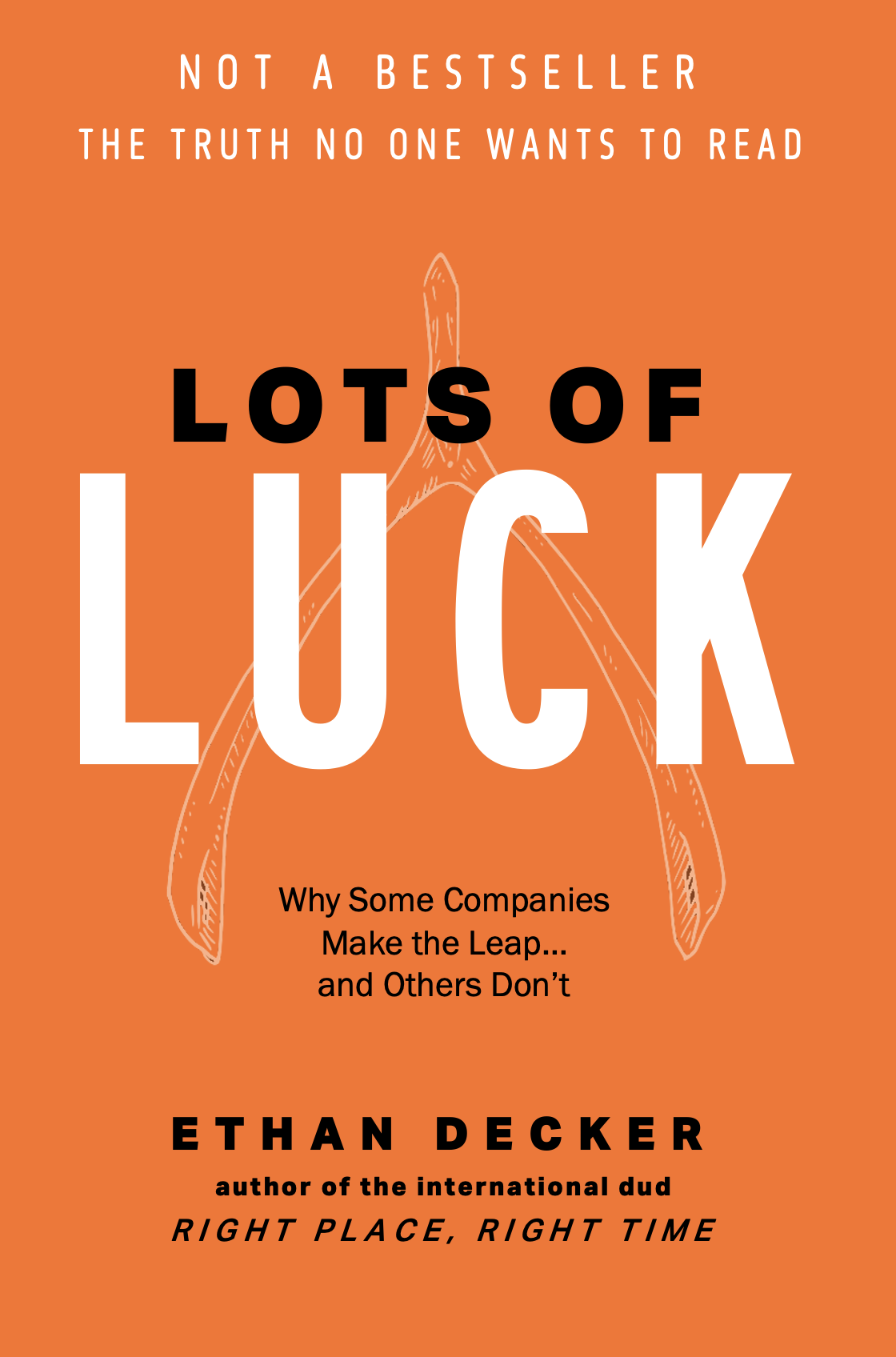
What’s the ingredient to success nobody wants to talk about?
There's a major ingredient to success in business that we often don't want to talk about.
Half of all new businesses fail in the first 5 years.
Often, the reason for their failures — and other companies' success — is a big, fat, steamy scoop of luck.

What’s the breakout brand of the century?
Like, which one is the most unlikely brand in one of the most challenging categories?
I say Tito’s vodka.
I mean, think about it:

Do you know HOW your customers like to buy?
Like, how they physically like to GET and PAY for your products or services?
Domino’s, f’rinstance, recently revealed that there’s only a 15% overlap between their carryout customers and their delivery customers.
That’s right: only 15% of their customers do both carryout & delivery. The rest are like Capulets and Montagues: never the twain shall meet.
It’s as if the shopping style alone has segmented the world into two entirely different markets for pizza.
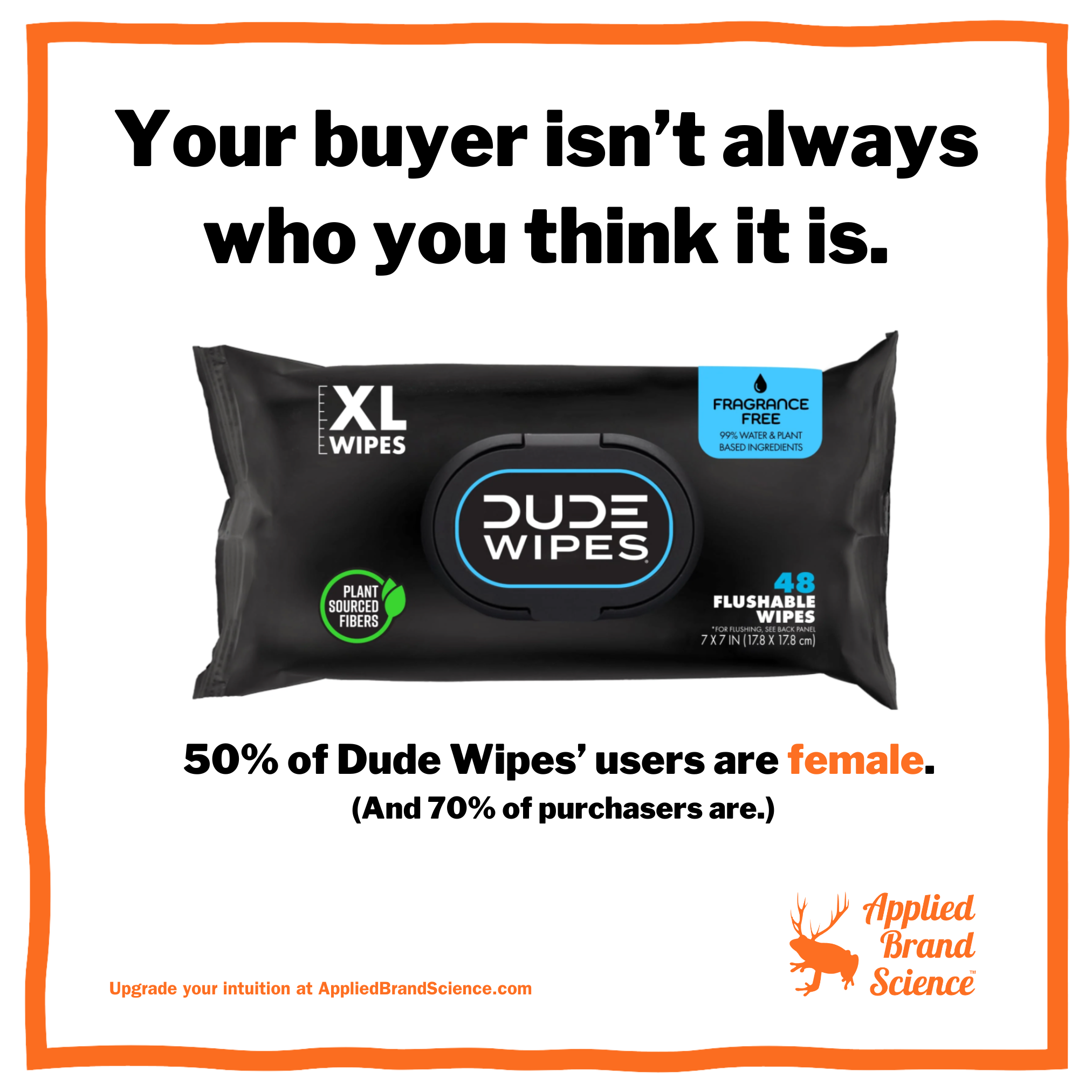
Who REALLY buys Dude Wipes?
Like, how well does the brand know its buyers?
You might’ve seen Dude Wipes. Launched in 2012, it is, quite simply, flushable wet wipes for dudes.
But is that tremendous growth really due to the cause? Maybe. But maybe not.
So you’d think the brand would, uh, rub women the wrong way. But you’d be wrong.

How is Dove’s “Real Beauty” like Geico’s Gecko?
We tend to think Dove’s campaign is a stellar example of purpose-driven marketing. But is it?
Yes, they’ve done amazing viral content on real beauty & self-esteem. (Including the recent one on beauty standards in AI-generated images.)
And yes, they’re one of only 11 CPG brands in the world with sustained growth over the past decade (according to Kantar.)
But is that tremendous growth really due to the cause? Maybe. But maybe not.

Want an ‘ownable’ logo?
Like, do you want your logo to never be confused with your competition?
Turns out there’s an interesting thing you can learn from some of the best in the world.
See, the first instinct for many logo designs is to do something “relevant” to the category.

Are Olympic medals a banana curve?
Like, is the medal count a bell curve, a banana curve, or something else?
No, this isn’t marketing per se. But it’s a fab example of this universal pattern.
The USA sits atop the medal count with 126 medals. China is next with 91. Then Great Britain with 65, and host nation France with 64.
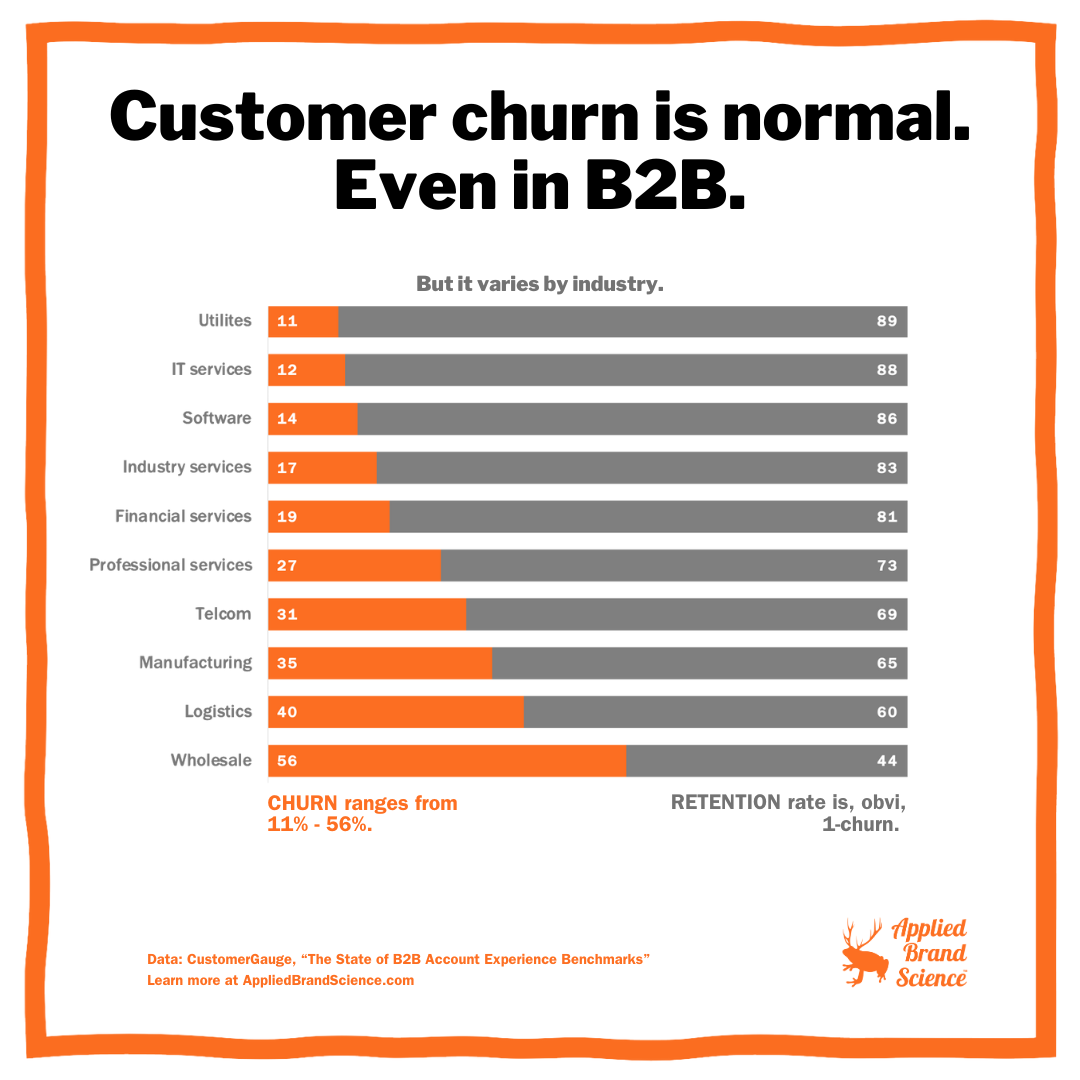
Is churn normal in B2B industries?
B2B relationships have a reputation for being long and stable.
A common belief is, companies find a supplier they like — equipment, taxes, SaaS — and they stick with them. Because switching stinks.
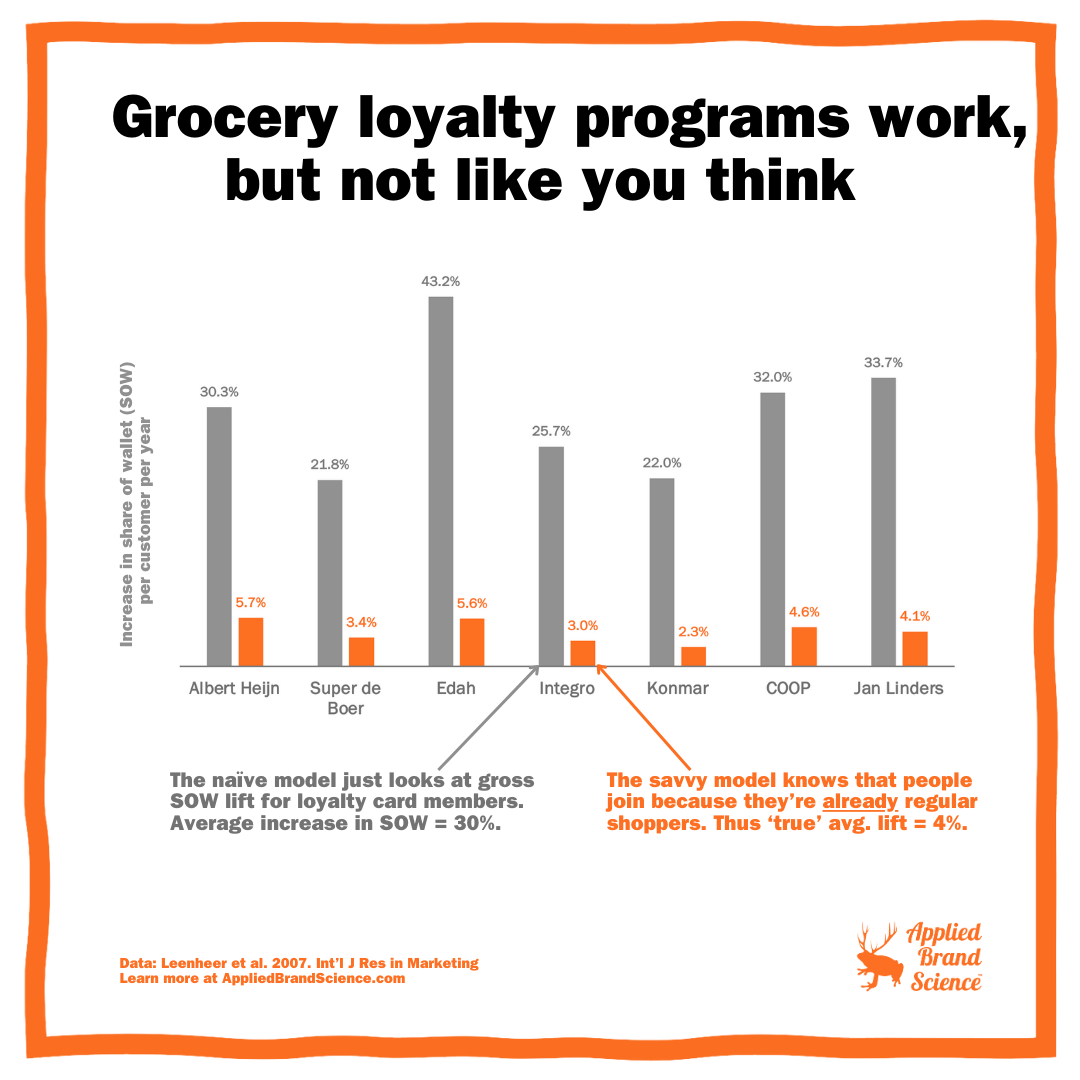
Do Grocery Loyalty Programs Work?
Dr. Jorna Leenheer & Co looked at data for 1,900 Dutch households over 2 years, covering 20 supermarkets and all 7 grocery loyalty programs.
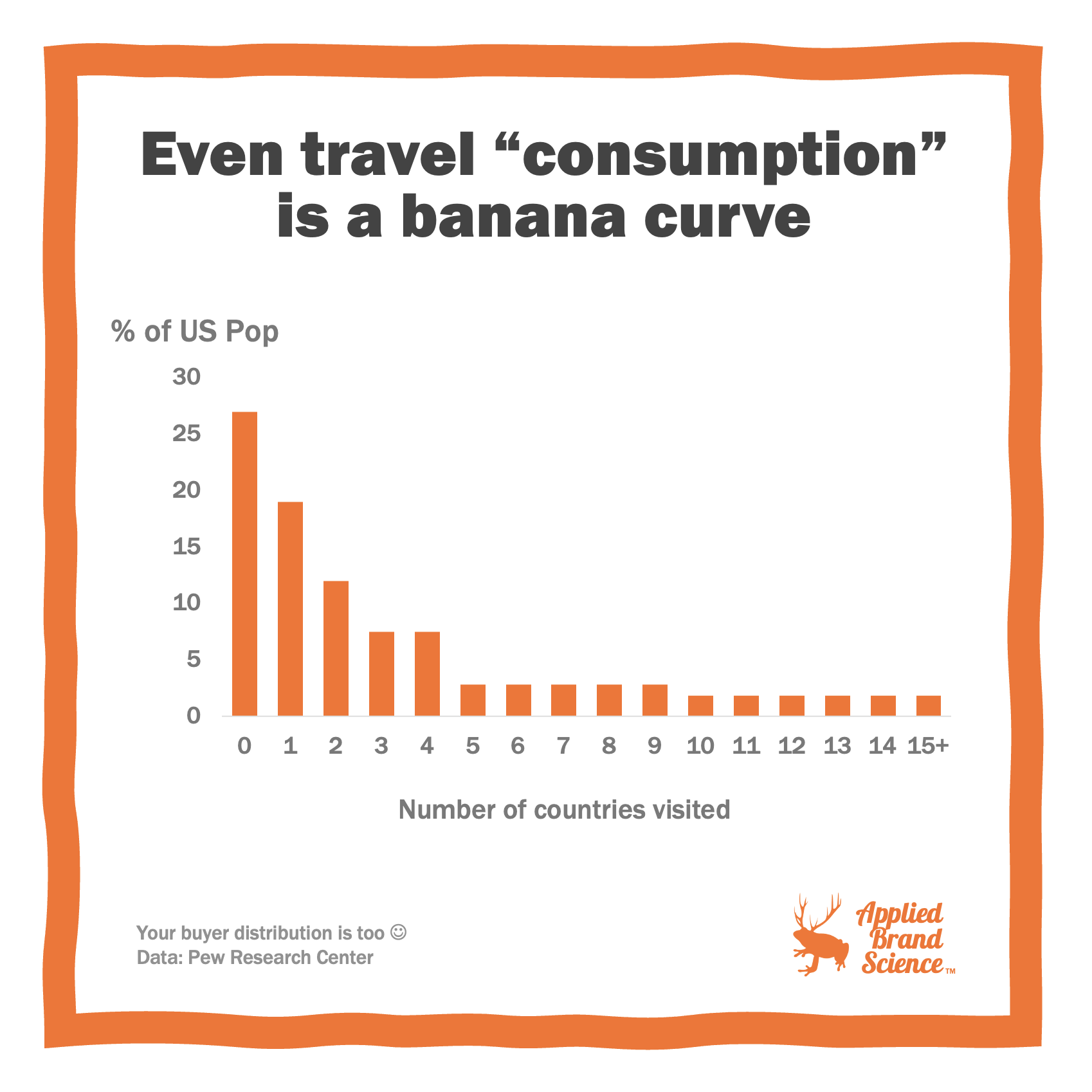
Does travel ‘consumption’ follow brand laws?
Unless you have one client and it’s the Dept of Defense, you probably have a banana curve of buyers. It might be when measured over years for B2B accounts, or for weeks for coffee shops. But it’s quite the universal pattern.

Do brands grow via loyalty or penetration?
It’s an age-old debate: acquire new customers, or try to get current customers to buy more?
Let’s look at Dove, one of the very very few global grocery brands to post 10 straight years of growth.
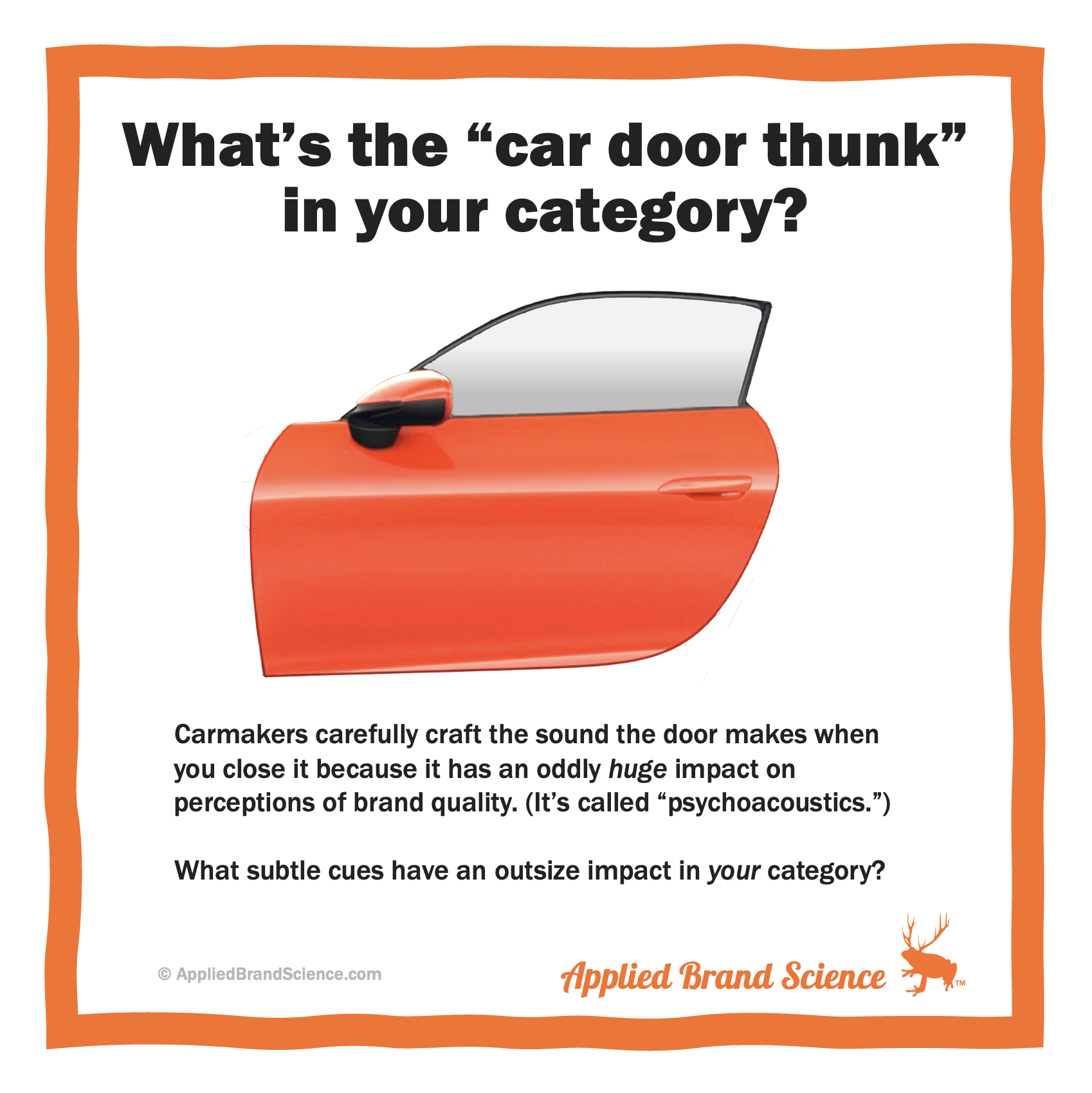
What’s the “car door thunk” in your category?
It’s an open secret that the sound the car door makes when you close it has an oddly huuuge impact on how you assess the car’s quality.
This is because our brains are leaky: impressions we get in one area bleed into other areas. It’s called the halo effect.
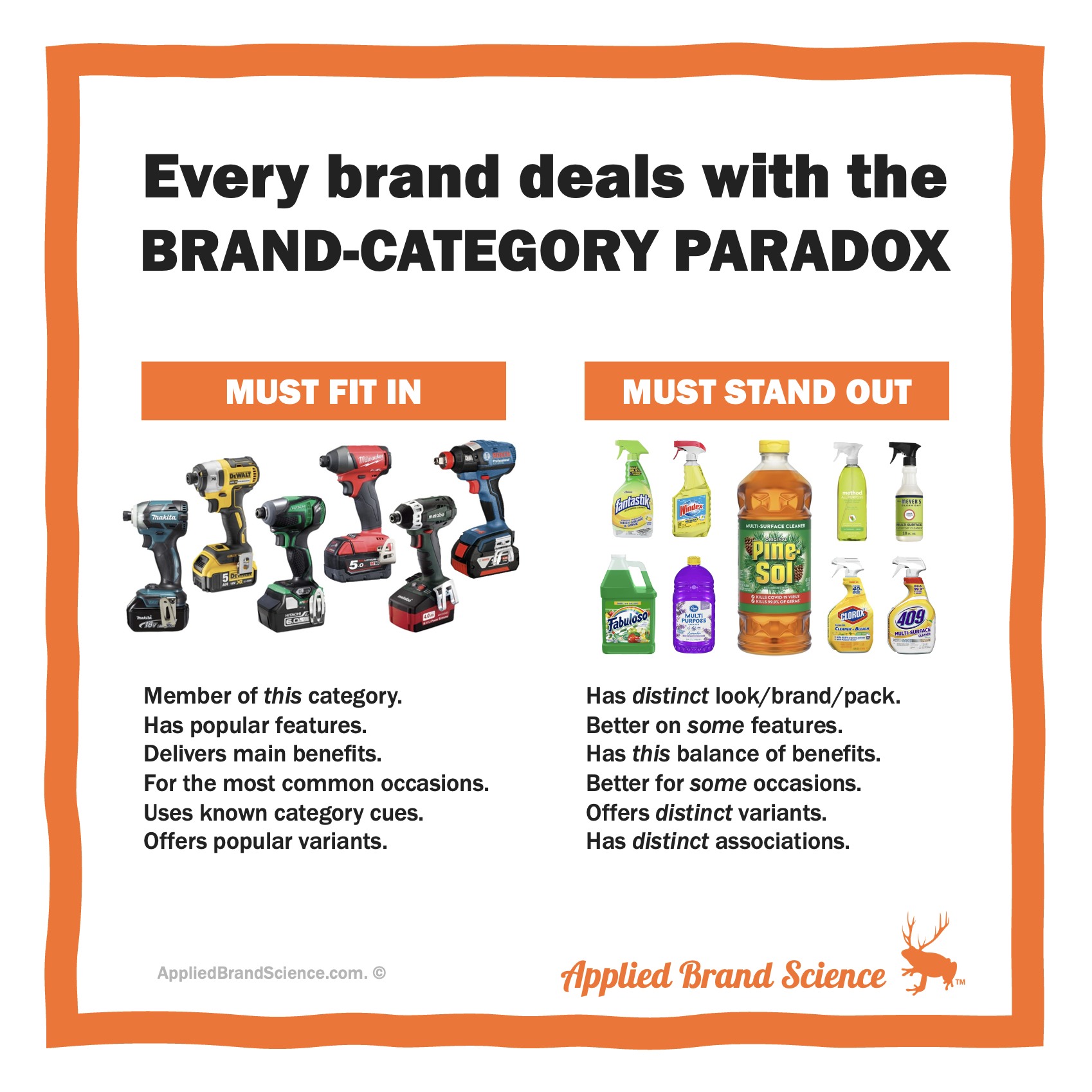
How Do You Handle the Brand-Catagory Paradox?
How do you stand out while fitting in?
This is the Brand-Category Paradox: how to deliver category basics but in distinct, branded ways. Fortunately there are lots of Levers you can pull to help handle it.

